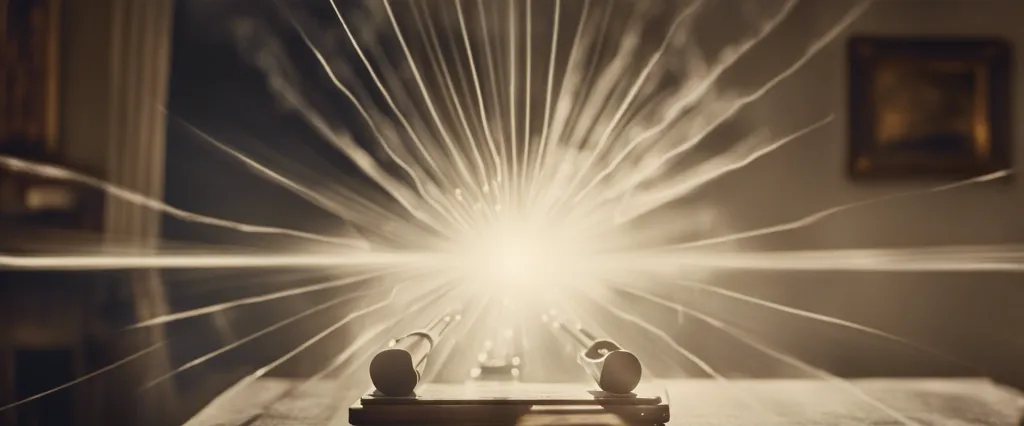——Bright Earth by Philip Ball & Camera Lucida by Roland Barthes

In the realm of visual arts, particularly photography, two distinguished works have emerged as significant contributions to understanding the power of images. Philip Ball’s “Bright Earth” and Roland Barthes’ “Camera Lucida” delve deep into the nuances of photography and its impact on our perception of the world. Spanning different periods and perspectives, these texts provide distinct yet interconnected explorations of the photographic medium.
Bright Earth” by Philip Ball presents a captivating narrative tracing the historical and scientific developments that revolutionized the art of painting. Ball delves into the intricate relationship between pigments and light, revealing how changes in artistic practices have influenced and been influenced by advancements in color chemistry. The book invites readers on a mesmerizing journey through centuries of artistic transformations, offering a comprehensive understanding of the interplay between light, color, and human perception. At its core, “Bright Earth” challenges conventional notions of visual representation and prompts us to question how we interpret the world through the prism of color.
In stark contrast, Roland Barthes’ “Camera Lucida” ventures into the realm of personal reflection and existential musings. Veering away from academic analysis, Barthes adopts a more introspective approach as he contemplates the essence of photography, driven by his personal grief and experiences. Through a highly emotive narrative, Barthes examines the elusive concept of the “punctum,” that ineffable quality in a photograph that pierces the viewer’s soul. By scrutinizing individual images that resonate with him, Barthes unveils the power of photography to evoke deep emotions and transcend the boundaries of language and time. “Camera Lucida” stands as a poignant reflection on the nature of art, memory, and the enigmatic connection between a photograph and its beholder.
While Ball and Barthes approach the subject matter from different angles, both “Bright Earth” and “Camera Lucida” encapsulate the profound impact of photography on human perception and interpretation. Through their distinct yet complementary perspectives, these texts offer readers an opportunity to engage with the multifaceted nature of the photographic medium. By embarking on this comparative study, we aim to uncover the shared insights, contrasting viewpoints, and thought-provoking revelations embedded in these two seminal works, ultimately enriching our understanding of the intricate relationship between images, art, and our own subjective experiences.
Brief Summary of Two Books
Bright Earth by Philip Ball
Bright Earth” by Philip Ball is a fascinating exploration of the history, science, and cultural significance of color. The book takes readers on a journey through time and across continents, tracing the origins of pigments and dyes and their impact on human civilization. Ball delves into various aspects of color, including the chemistry behind different hues, the significance of color in art and religion, and the role of color in our perception of the world. From ancient Egypt to Renaissance Italy, from the Industrial Revolution to modern-day synthetic pigments, “Bright Earth” unveils the captivating story of color and its enduring influence on human culture.
Camera Lucida by Roland Barthes
Camera Lucida is an introspective and philosophical book by Roland Barthes, where he explores the nature of photography and its relationship with mortality and memory. Barthes explores his personal experiences with photography, examining both his own photographs and famous historical images, in order to understand what makes a photograph captivating and why some photos have a lasting impact.
The book is divided into two main sections. In the first part, Barthes dissects his own engagement with photography, aiming to uncover the essence of a photograph that possesses the power to deeply move and affect the viewer. He introduces the concept of the “punctum,” which he defines as the detail or element within a photograph that personally strikes the viewer, creating an emotional connection. He finds that this punctum is subjective and different for every individual, making it an unpredictable and mysterious aspect of photography.
In the second part of the book, Barthes reflects on the impact that photographs have on our understanding of mortality and the passage of time. He examines a photograph of his deceased mother as a young girl, searching for a personal connection to her and the ability of photography to capture the essence of a person. He investigates the relationship between presence and absence within a photograph and how the photograph becomes a powerful medium for remembering and preserving the past.
Overall, Camera Lucida is a deeply personal and philosophical examination of photography. Barthes delves into the emotional and intellectual dimensions of photography, and invites readers to think deeply about the power and significance of this visual medium in our lives.
Comparison between Two Books

Similarities in Art History
Both “Bright Earth” by Philip Ball and “Camera Lucida” by Roland Barthes delve into the realm of art history, exploring different aspects of the subject. Although their approaches differ, there are similarities in how both books discuss art history.
1. Aesthetic appreciation: Both books emphasize the importance of appreciating and understanding the aesthetic aspects of art. Ball explores the impact of color on art throughout history in “Bright Earth,” while Barthes contemplates the emotional and subjective connection he forms with photographs in “Camera Lucida.” Both authors recognize that art history necessitates an appreciation for the visual aspects of artwork.
2. Contextual analysis: Both authors understand the significance of a work of art within its historical context. Ball discusses how the availability and use of certain pigments shaped artistic choices and trends over time. Additionally, Barthes contemplates the historical context in which photographs were taken and the impact of that context on their interpretation. Both books recognize the importance of understanding the broader context surrounding artworks.
3. Interpretation and meaning: Both “Bright Earth” and “Camera Lucida” touch upon the subjective nature of art interpretation. Ball and Barthes acknowledge that each viewer brings their own unique perspective and experiences when engaging with art. They explore personal interpretations, highlighting how individuals form their own meanings from art and how these meanings can vary. This recognition emphasizes the diversity of interpretation in art history.
4. Influence and legacy: Both authors explore the impact of certain art movements or techniques on subsequent art history. Ball showcases how the discovery and use of new pigments have shaped artistic expression. Similarly, Barthes discusses the influence of photography on the development of art and its subsequent impact on contemporary artists. Both books recognize the ever-evolving nature of art history and its interplay with different eras and techniques.
In conclusion, “Bright Earth” and “Camera Lucida” share similarities in how they discuss art history. Both recognize the significance of aesthetic appreciation, contextual analysis, interpretation, and artistic influence. While “Bright Earth” emphasizes the role of pigments and color, “Camera Lucida” engages with the emotional connection formed through photography. Together, these books provide complementary insights into the rich tapestry of art history.
Divergences in Art History
Bright Earth by Philip Ball and Camera Lucida by Roland Barthes are both influential works in the field of Art History, but they approach the subject from different perspectives and explore different aspects of the discipline.
Bright Earth delves into the history, science, and cultural significance of color in artworks. Philip Ball examines how artists throughout history have utilized various pigments and colors to convey emotions, cultural symbols, and societal meaning. The book delves into the chemical properties of different pigments, the shifting tastes and availability of colors, and how pigments have shaped art movements and styles. Ball’s work is rooted in scientific analysis and explores the technical processes behind the creation of art, providing a comprehensive understanding of color’s role in visual expression.
On the other hand, Camera Lucida by Roland Barthes approaches art history from a more philosophical and personal standpoint. Barthes focuses his exploration on photography, using the concept of “punctum” to analyze the emotional impact of certain photographs. He reflects on the power of photography to capture a moment in time and provoke an emotional response in the viewer. Camera Lucida is a deeply introspective account, where Barthes reminisces about his own experiences with certain photographs and shares his thoughts on the nature of art and the medium’s relationship with memory and death.
The divergence between these books lies in their approach to Art History. Bright Earth takes a more analytical and scientific approach, studying the technical aspects of art creation and the cultural significance of color over time. On the other hand, Camera Lucida is a more personal and philosophical exploration of photography as a medium, focusing on the emotional impact and individual reactions it can elicit.
Moreover, Bright Earth emphasizes the importance of context and cultural influences on the use of color, while Camera Lucida focuses on the personal and subjective experience of the viewer when encountering a photograph. These divergent perspectives reflect the multidimensionality of Art History as a discipline, with one book exploring the technical and cultural intricacies of color, while the other delves into the emotional and philosophical aspects of photography.
In conclusion, Bright Earth by Philip Ball and Camera Lucida by Roland Barthes differ in their approach to Art History. While Bright Earth examines the technical and cultural significance of color in art, Camera Lucida provides a personal and philosophical analysis of photography’s emotional impact. These divergences highlight the multifaceted nature of Art History as a subject, and demonstrate how different perspectives can contribute to a richer understanding of artworks and their meaning in society.

Conclusion
“Bright Earth” by Philip Ball is a book that focuses on the history, science, and cultural significance of color. It explores how different pigments have shaped art, fashion, and even society throughout the ages. If you are interested in art history, science, or the cultural impact of color, this book may be a fascinating read for you.
On the other hand, “Camera Lucida” by Roland Barthes is a more introspective and philosophical exploration of photography. Barthes reflects on the essence of photography and how it captures moments and emotions. He also investigates the relationship between the photograph and the viewer, discussing personal experiences and memories associated with certain images. If you are interested in photography as an art form and enjoy philosophical contemplation, this book may be more appealing to you.
Ultimately, both books have their own unique merits and can offer valuable insights depending on your interests. It may be helpful to read reviews or summaries of each book to get a better idea of which one aligns more with your personal preferences.


